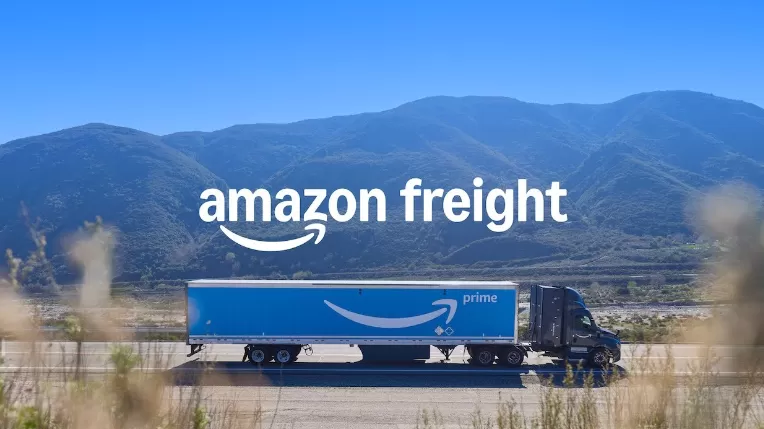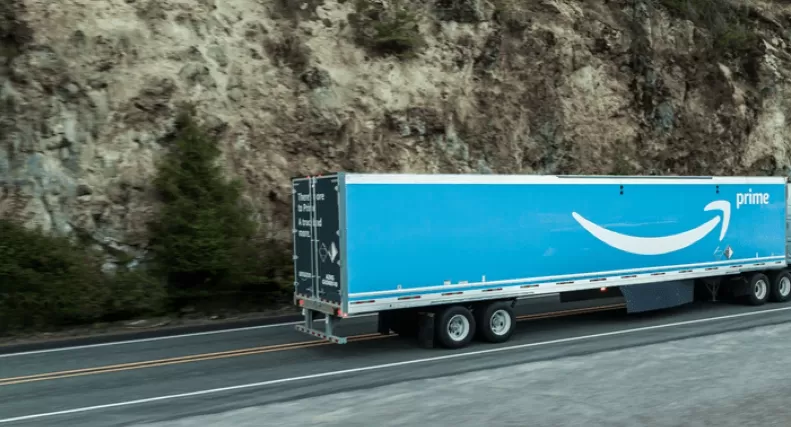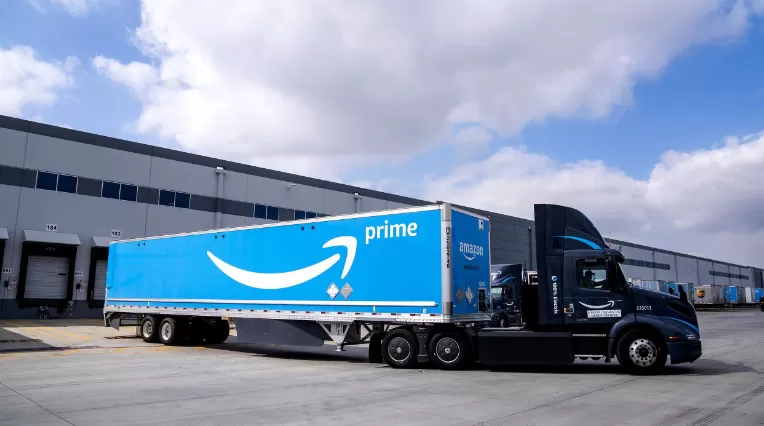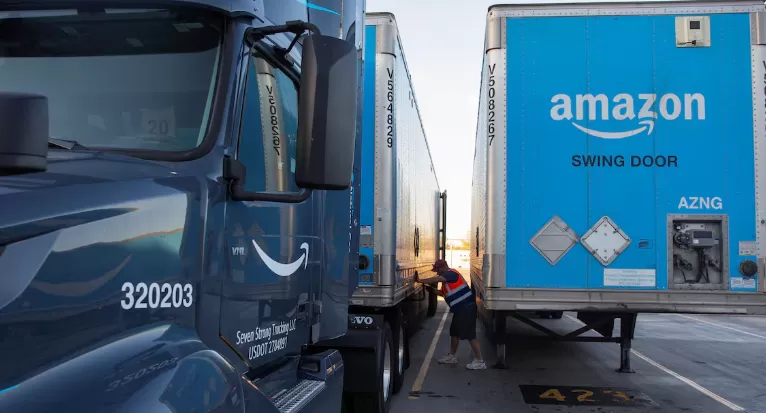If you're an Amazon seller, you've probably seen "Amazon Freight" pop up in your Seller Central dashboard. But what exactly is it? Is it just another version of FBA? Or something completely different?
Here's the truth: Amazon Freight represents Amazon's strategic move to control another crucial piece of the supply chain. Understanding what it is—and what it isn't—could save you time, money, and prevent major logistical headaches.
Let's break down everything you need to know, including the critical details about insurance, returns, and what to do when things go wrong.
What Exactly is Amazon Freight? (And What It's Not)
At its core, Amazon Freight is Amazon's internal trucking service designed to move your inventory between key points in the supply chain. Think of it as Amazon's own fleet of trucks that you can hire.
Here's what it primarily does:
Transports containers from major ports (like LA/Long Beach) to Amazon fulfillment centers
Handles truckload shipments from your warehouse or third-party logistics provider to Amazon facilities
Manages domestic transportation within the Amazon ecosystem
The Critical Confusion: Amazon Freight vs. Amazon Global Logistics
This is where most sellers get confused. Let's clear this up:
Amazon Freight = Domestic trucking within your target market (like the US or Europe)
Amazon Global Logistics (AGL) = International shipping from origin countries (like China or Vietnam) to destination countries
Think of it this way: AGL handles the ocean or air freight across oceans, while Amazon Freight handles the final truck ride to the fulfillment center. They're two different services that can work together.
How Amazon Freight Works in Practice
Wondering how to actually use it? The process is surprisingly straightforward:
Access Through Seller Central
Log into your account and navigate to the Amazon Freight section. If you don't see it, you might need to request access or meet certain eligibility requirements.
Get Your Quote
Enter your shipment details:
Pickup location (port, warehouse, or manufacturer)
Destination Amazon facility
Container size or pallet count
Any special requirements
Book and Track
Once you accept the quote, you'll receive:
A confirmed booking
Pickup and delivery appointments
Real-time tracking through Seller Central
The beauty is in the integration. Since everything happens within Seller Central, you're not juggling between multiple platforms or dealing with communication gaps between different companies.
The Real Pros and Cons: An Honest Assessment
Where Amazon Freight Shines:
Seamless Integration
Everything happens in one place—from booking to tracking to payment. You're not uploading spreadsheets to multiple systems or chasing down different customer service teams.
Reliable Capacity
During peak seasons or capacity crunches, Amazon Freight often has trucks available when other carriers are fully booked. They prioritize their own network, which works in your favor.
Predictable Pricing
You get an all-in rate upfront. No surprise accessorial charges or hidden fees that sometimes pop up with traditional carriers.
Streamlined Operations
The entire process is designed for Amazon-to-Amazon moves. Less paperwork, fewer touchpoints, and simplified communication.
Where It Might Fall Short:
Limited Flexibility
Need to make multiple stops? Have unusual pickup times? Amazon Freight operates on their schedule and their routes. They're not built for complex logistics scenarios.
Price Competitiveness
While convenient, their rates aren't always the most competitive—especially for straightforward routes where traditional carriers might offer better pricing.
Service Limitations
Don't expect white-glove service or personalized account management. You're dealing with a system, not a dedicated representative who knows your business intimately.
Critical Considerations Most Guides Miss
1. Insurance and Liability: Who Pays When Things Go Wrong?
This might be the most important section in this guide. Here's the reality:
Amazon's basic liability for damaged or lost goods is limited and often doesn't cover the full retail value of your products.
The gap: If you're shipping $50,000 worth of goods and Amazon Freight loses the pallet, you might only recover a fraction of that amount.
The solution: Always purchase third-party cargo insurance for your shipments. The small additional cost (usually 0.1%-0.3% of the goods' value) is worth the peace of mind. This is standard practice with any carrier, not just Amazon Freight.
2. Reverse Logistics: The Return Trip Reality
Here's a crucial limitation you need to understand:
Amazon Freight is designed for inbound shipments to Amazon. It's not meant for handling your returns or moving inventory out of Amazon's warehouses.
For removal orders or customer returns, you'll need to use Amazon's Partnered Carrier program or arrange your own logistics for getting goods back to your warehouse.
3. Peak Season Performance: The Double-Edged Sword
During Q4 and other busy periods:
Advantage: Amazon Freight does maintain reliable capacity for its network when other carriers are overwhelmed.
Challenge: You still need to book far in advance—sometimes 2-3 weeks ahead of your needed date. Don't assume that being in their system guarantees last-minute capacity.
4. Dispute Resolution: When You Need to File a Claim
If something goes wrong with your shipment:
The process happens entirely within Seller Central through standardized forms.
Document everything: Take photos of your pallets before pickup, keep detailed packing lists, and save all communication.
Be patient: The claims process can take several weeks to resolve. Having proper documentation significantly increases your chances of a successful claim.
Cost Analysis: What You're Really Paying For
Let's talk numbers. While exact pricing varies, here's what a typical shipment might look like:
Sample Scenario: Port of LA to ONT8 Fulfillment Center
53-foot container
Standard dry goods, no special handling
Typical lead time (3-5 day booking window)
Your costs would typically include:
Base linehaul rate
Fuel surcharge
Any special equipment fees
The advantage? You see the total cost upfront. No guessing about fuel surcharges or unexpected detention fees.
However, here's the catch: Amazon Freight's pricing is designed for simplicity, not necessarily for negotiation. Traditional carriers might offer more room for rate discussion, especially if you have consistent volume.
Integrating Amazon Freight Into Your Supply Chain
How does this fit with your existing operations? You have two main approaches:
Scenario A: The All-Amazon Approach
Use Amazon Global Logistics (AGL) for your international shipping from China
Use Amazon Freight for the final domestic leg from port to FBA
Benefit: Maximum simplicity within one platform
Scenario B: The Hybrid Approach
Use your preferred traditional freight forwarder for international shipping
Use Amazon Freight just for the domestic drayage from port to FBA
Benefit: Potentially lower international rates while still enjoying reliable domestic capacity
Key: Ensure your forwarder coordinates seamlessly with Amazon Freight for container pickup
Your Decision Framework
Still unsure? Ask yourself these questions:
Is my shipment pattern simple? (Point A to Point B)
Do I value time savings over cost savings?
Am I comfortable with a self-service model?
Is my shipment time-sensitive during peak seasons?
Have I arranged proper cargo insurance for my goods' full value?
If you answered "yes" to most of these, Amazon Freight might be worth trying. If you have complex needs or prioritize cost above all else, traditional freight options might serve you better.
The Bottom Line
Amazon Freight isn't a revolutionary service—it's an evolution of Amazon's strategy to control every aspect of the e-commerce experience. For the right seller with the right type of shipments, it offers undeniable convenience and reliability.
But it's not for everyone. The trade-off between convenience and flexibility is real, and the cost-benefit analysis will look different for every business.
The smart approach? Try it with a smaller shipment first. See how the process works for your specific operation. Compare the actual costs and service levels to what you're currently using. Sometimes the integrated experience is worth every penny—other times, you might find that sticking with traditional options gives you the control and pricing you need.
Remember, the best logistics strategy is the one that aligns with your business goals, not just what's most convenient in the moment.
Frequently Asked Questions (FAQs)
1. Q: Can I use Amazon Freight to ship to other retailers or my own warehouse, or is it exclusively for Amazon Fulfillment Centers?
A: It's primarily designed for movements within the Amazon ecosystem. While there may be limited scenarios for shipping to non-Amazon locations, its core function and pricing are optimized for deliveries to Amazon Fulfillment Centers. For multi-retailer or dedicated warehouse distributions, a traditional freight broker is usually more flexible and cost-effective.
2. Q: What freight class (NMFC) does Amazon Freight use for LTL shipments, and how does it affect my rate?
A: Like all carriers, Amazon Freight uses the National Motor Freight Classification (NMFC) system for Less-Than-Truckload (LTL) shipments. Your product's density, value, and handling characteristics determine its class. Providing accurate product information is crucial, as an incorrect class can lead to reclassification fees and higher charges after pickup.
3. Q: My supplier is in a different country. Can I have them book and pay for the domestic US leg with Amazon Freight?
A: Technically possible, but it introduces complexity. The booking party must have a US-based Seller Central account with Amazon Freight access. A smoother method is for you (the importer of record) to manage the booking, ensuring clear control and visibility. Your international freight forwarder can then coordinate the container hand-off to Amazon Freight at the port.
4. Q: Does my shipment require a liftgate for pickup or delivery, and does Amazon Freight provide this service?
A: This depends on your pickup/delivery location. If a dock is unavailable, you must specify the need for a liftgate during the booking process. Amazon Freight does offer this service, but it will be included as an additional accessorial charge in your final quote.
5. Q: Who prepares the Bill of Lading (BOL) when using Amazon Freight?
A: Typically, you (the shipper) are responsible for preparing and verifying the BOL. The great advantage with Amazon Freight is that this process is often digitized and integrated within Seller Central. You'll fill out the details online, and the system will generate the required BOL for the driver.
6. Q: Can I mix different products and SKUs in a single pallet when shipping with Amazon Freight?
A: Yes, you can ship mixed pallets. However, it is your responsibility to ensure that each pallet is clearly labeled according to Amazon's FBA requirements, and that the contents match your shipping plan in Seller Central precisely to avoid receiving delays at the fulfillment center.
7. Q: What happens if my shipment is refused at the Amazon Fulfillment Center?
A: If your shipment is refused due to non-compliance (e.g., wrong labels, prohibited items), you will be responsible for the immediate costs of redirecting and storing the freight. Amazon Freight will not store it. You'll need to quickly arrange for an alternative carrier to pick up the load from the FC, incurring additional costs and significant hassle.
8. Q: Are there any specific packaging requirements from Amazon Freight that differ from standard FBA guidelines?
A: Amazon Freight follows the standard FBA packaging and preparation requirements. There are no unique "Amazon Freight" packaging rules. The critical point is that your pallets must be stable, properly secured, and dimensionally compliant to withstand the trucking journey without collapsing, which could lead to damages and claims.
9. Q: Can I track the driver's location in real-time, like an Uber package?
A: No, the tracking provided is typically at the shipment milestone level (e.g., "Picked Up," "In Transit," "Arrived at Destination"). You won't get live, turn-by-turn GPS tracking of the truck. This level of visibility is more commonly found with dedicated carriers that offer premium, white-glove services.
10. Q: If I have a dedicated freight forwarder I love for international shipping, can they manage and pay Amazon Freight on my behalf?
A: This is a common "hybrid" model. Your freight forwarder can coordinate the hand-off and schedule the Amazon Freight pickup. However, the booking and payment must be processed through your own Seller Central account. You would pay Amazon directly for the trucking leg, and your forwarder would invoice you for the international portion. Clear communication between all parties is key.

 EN
EN
 FR
FR
 ES
ES
 JA
JA
 PT
PT
 RU
RU
 AR
AR








